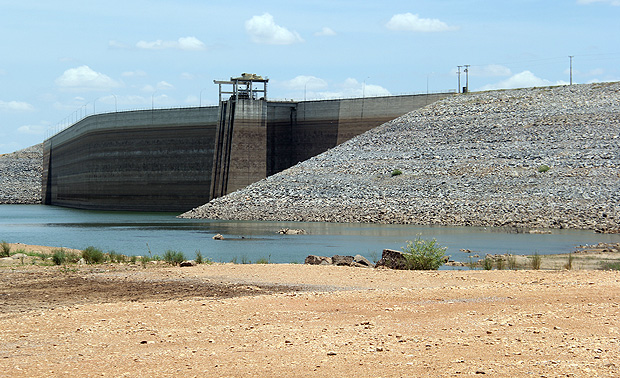Latest Photo Galleries
Brazilian Markets
17h33 Bovespa |
-0,33% | 125.148 |
16h43 Gold |
0,00% | 117 |
17h00 Dollar |
-0,77% | 5,1290 |
16h30 Euro |
+0,49% | 2,65250 |
ADVERTISING
Ceará Transfers Water from the Sertão to the State Capital
03/28/2017 - 12h01
Advertising
MARCEL RIZZO
FOLHA CONTRIBUTOR IN FORTALEZA
José Ferreira Lima, 69, prays every day for rain in the region of Orós, a city 350 km from Fortaleza embedded in the Ceará Sertão (Northeastern arid backlands).
He is one of the fish farmers who since July of last year have observed the draining of the Orós reservoir - the principal source of water not only for human consumption in the region, but for raising tilapia fish and other local livestock.
The water has been drained to supply another reservoir, Castanhão, located 125 km away in the city of Nova Jaguaribara.
The water transfer is a strategy which has been undertaken by the State Government to prevent the collapse of the metropolitan area of Fortaleza where more than 4 million people live, until the transposition of the São Francisco river project is finished.
Since the Castanhão is at a critical level, the water has been transferred from the sertão to the State Capital.
"If the reservoir isn't refilled, many families will continue losing fish", says José Ferreira Lima, of the Jurema Community Association in Orós. Many residents, he says, have already given up on raising fish - he alone claims to have lost R$200 thousand (US$ 65 thousand) in 2016.
In July, the capacity of the Orós reservoir stood at 32%. Today, it has fallen to 10,2% according to Ceara's Cogerh (Hydric Resources Management Company). The volume at Castanhão is 5,85%.
| Honorio Barbosa - 19.fev.17/Agencia Diario | ||
 |
||
| Castanhão, located 125 km away in the city of Nova Jaguaribara |
The lack of rainfall in the Northeast in the last five years has resulted in 123 of the 153 reservoirs in Ceará falling below 30% of capacity.
The average level of the reservoirs in Ceará stands at 8,4%. This causes another problem: with very low levels, the water may not be fit for human consumption (since there is less water to dilute potential pollutants).
In 1993, during a similar drainage from Orós, when it reached 13% of capacity, the residents of the sertão were advised to not drink the water or use it for cooking.
Translated by LLOYD HARDER



